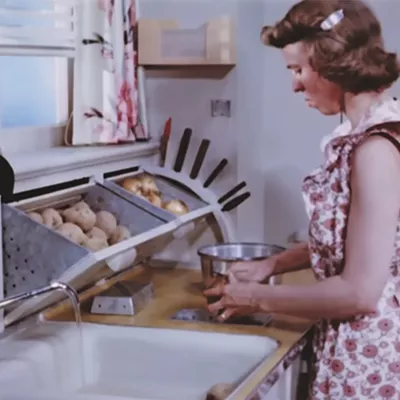We all treasure our child’s early observations at age 2: “There’s doggie!” and “Pee fow-er (pretty flower).” Parents of a gifted 2-year-old may hear something more like this: “There’s a brown doggie in the backyard, and he’s sniffing our flower.”
The morning after Spokane teacher Molly Zammit first read Green Eggs and Ham to her 4-year-old, her child read it back to someone else.
“Oh my God,” she said at the time, “my child is reading and I didn’t do anything!”
It’s thrilling, but what are parents and teachers to do when a precocious cutie begins questioning the molecular structure of the rug at circle time?
In the early 1900s, the solution was let them skip ahead a few grades. Grade skipping turned out OK for writer T.S. Eliot and civil rights leader Martin Luther King Jr. The Nobel Prize Winners graduated from high school at age 16 and 15, respectively. Sandra Day O’Connor also finished high school at 16, later becoming the first female Supreme Court Justice.
Yet grade skipping is rarely used now, because of concerns about gaps in social development.
The most brilliant student Spokane teacher Heidi Harding has worked with was a kindergartner who would sit quietly writing and solving algebraic equations while his classmates sorted beans into cups. “We had a class meeting talking about goals and what we wanted to learn that year,” she recalls. “He said, ‘I want a friend.’ So I worked with him on how to manage his emotions appropriately; how to be a friend and have a friend.” Harding says skipping grades would not have worked for this child, although his intellectual capacity was advanced. “This was also a child who preferred eating his lunch in the storage closet.”
But authors of A Nation Divided: How Schools Hold Back America’s Brightest Students might have suggested that the bright kindergartner had trouble finding a friend because he “felt out of place with students of [his] own age.” They describe grade skipping, early entrance to school and advanced placement as forms of acceleration, which allow teachers to match “the level, complexity and pace of the curriculum to the readiness and motivation of the student.”
They say the concern over grade skipping is unfounded, asserting, “Many gifted children gravitate to older children, so making friends becomes easier.
“When we say no to acceleration,” they charge, “we are quietly lowering our national standards… to baseline competence. It’s a national scandal,” they write. “And the price may be the slow but steady erosion of American excellence.”
Children Left Behind
Kathryn Picanco, an assistant professor of education at Whitworth, understands both sides of the argument. “Grade skipping is an option,” she says, “but it’s hard to find a student who is gifted across the board academically. Gifted children tend to excel in specific types of skills and activities.”
Picanco trains new teachers to teach to multiple levels in the classroom with differentiation, which adapts lessons with “highly stimulating environments, rich creative experiences and appropriately challenging work.” Unfortunately, she admits, most teachers hit a roadblock trying to implement innovative curriculum. “The high-stakes testing no longer allows for creativity,” she says.
The unfortunate side effect of “No Child Left Behind” is that the federal educational program ties funding to schools’ performance on standardized tests. The scramble to make sure the lowest achievers keep up can leave the highest achievers in the shadows.
Recent budget numbers show that in the years since the implementation of NCLB, the U.S. spends more than $8 billion annually on programs for the mentally challenged, and just $800 million on gifted education. Some schools have cut it out completely.
“I think ‘No Child Left Behind’ has left all children behind,” asserts Harding. Her fifth grade classroom is in one of Spokane’s Title I schools, which benefits from NCLB’s federal funding.
“As a teacher, I’m not afraid of accountability,” says Harding. “But… the obsessive focus on testing limits teachers’ abilities to address and meet the needs of individual students, whether below-level or gifted.”
While researchers estimate one-fifth of all high school dropouts test in the gifted range, Picanco thinks the number may be even higher.
“If education seems pointless, and there’s no value, gifted students will feel undervalued and misunderstood,” says Harding.
“They’ll slip through the cracks.”
“We could be losing this population of people who are the next round of innovators and entrepreneurs,” says Picanco. “People say gifted kids can do it on their own, but it’s not true. They need help and direction. All children deserve to reach their potential.”
Cultivating Brilliance
In spite of financial challenges, there are programs and teachers expertly meeting the needs of some of our area’s most gifted students.
Molly Zammit found an outlet for her Green Eggs and Ham-reading preschooler in District 81’s Tessera program.
About 400 of the top 3 percent of third through sixth graders in Spokane Public Schools meet once a week at Libby Center for Tessera’s differentiated instruction, based on students’ individual “strengths, interests and needs.” There are three tests, starting in first grade, which set a baseline for Tessera qualification. Recommendations of teachers and parents decide who makes the cut.
“The teachers are stellar,” says Zammit. “They are prepared, they love those kids and they really do make a difference.”
“My son absolutely loved his teacher,” says Leslie Moore, whose fourth grader is starting his second year with Tessera. “All this year on ‘Tessera Tuesday,’ he couldn’t wait to get to school. The previous year we couldn’t even get him out of bed.”
Moore says she has struggled to make teachers understand how her son thinks — what it takes to keep him engaged. “I swear he could make Origami all day, every day,” she says. “It’s been work making sure he gets his needs met. You just have to find ways to challenge; you have to be prepared for your house to be one big science experiment,” Moore laughs. “I tell him we at least need room to eat dinner.”
The Odyssey program is Spokane Public Schools’ self-contained classroom for gifted fifth through eighth graders. Although incoming students go through a qualification process, Tessera graduates are eligible to enroll.
Mead School District’s version of a pullout-style gifted education is the Challenge Program, open to fourth through sixth graders, with similar enrollment criteria. Qualifying Challenge students meet one hour per week.
Another option for outside-the-box teaching is Discovery School, where Zammit teaches fourth grade. The private school in downtown Spokane promises, through individually designed lessons and activities, to turn out “emotionally mature, academically successful, socially aware and self-motivated citizens of the world.”
Zammit says Discovery School’s big appeal for parents and children is “hands-on curriculum, and noisy rooms.
“We do inquiry-based science,” she adds. “We encourage students to keep questioning. If they can show they’ve accomplished something, we ask them to solve it another way.”
Although gifted kids crave challenge, Zammit says they can burn out quickly.
“I love raising the bar, but there’s a balancing act between knowing when to push and how to push, keeping in mind that they are still children. They want to go outside and play.”
Creating Balance
Aside from giving up her home to science experiments, Moore believes that play may be the most important aspect of balance in her son’s holistic development.
“Hockey has been good because he’s part of a team. A bunch of the kids were hanging out in the hotel [during a recent weekend trip], and they asked him if he wanted to play, and he lit up. He feels like he’s part of something.”
For Zammit’s youngest daughter, who tests just under the gifted range, it’s figure skating.
“Find something that is their passion and help them nurture that,” she advises. “If they love reading, there are book clubs. If they love math, find someone to mentor them.”
Kathryn Picanco believes the current trend of test-driven curriculum will soon reverse, moving toward the more-process driven, discovery-based teaching with which gifted kids flourish, adding, “What’s necessary for gifted students is good for all students. Once teachers embrace the idea of differentiation, it benefits everybody and enhances their instruction.”
GIFTED VS. BRIGHT
The bright child…
…knows the answers
…is interested
…pays attention
…works hard
…answers questions
…enjoys same-age peers
…learns easily
…is good at memorizing
…is self-satisfied (when he gets answers right)
The gifted child…
…asks the questions
…is very curious; intense concentration in broad, changing interests
…gets involved mentally and physically
…can be inattentive and still excel
…questions the answers
…prefers adults; carries on intelligent conversations with older people
…often already knows answers; early use of expanded vocabulary
…reproduces events with great detail
…is highly self-critical and perfectionistic
SOURCE: www.austega.com/gifted















